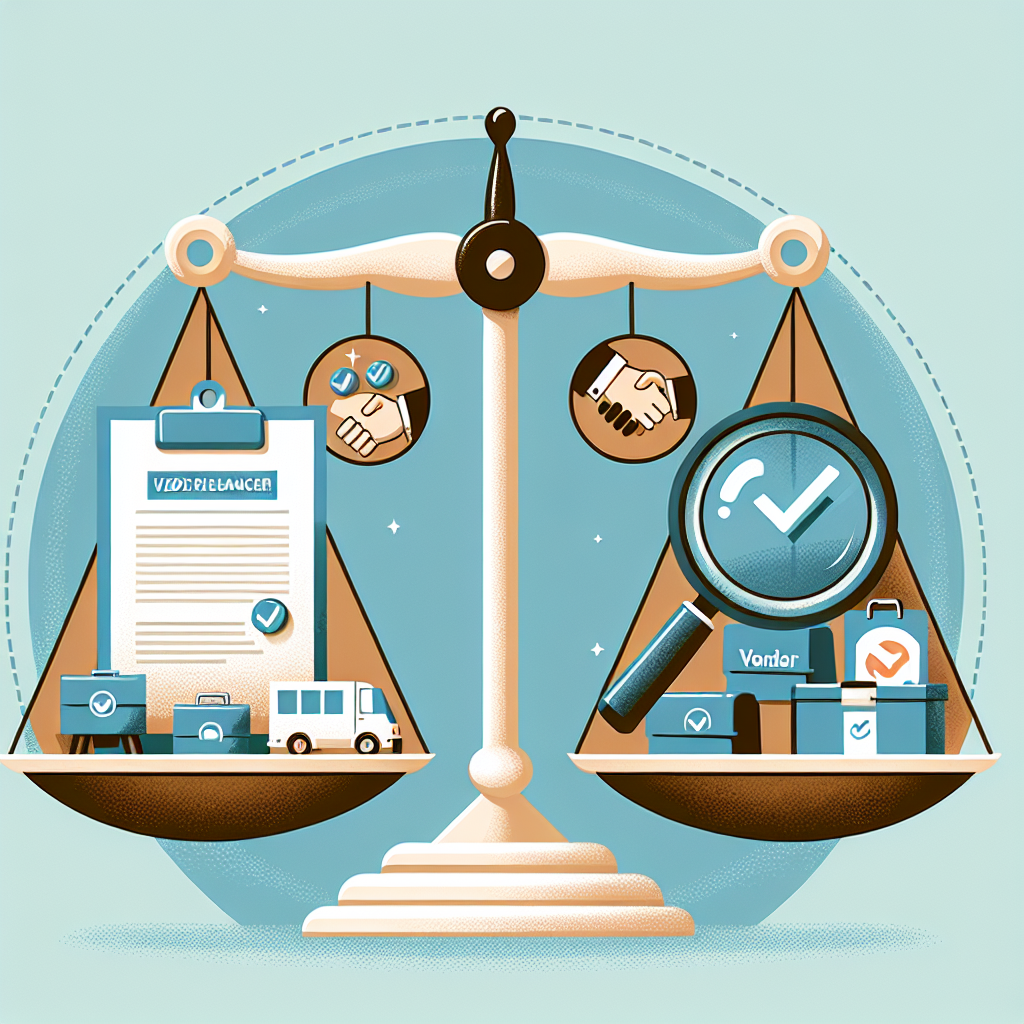Your cart is currently empty!
Tag: SLAs

Everything You Need to Know About Service Level Agreements (SLAs)
Service Level Agreements (SLAs) are a crucial component of any business relationship, particularly in the realm of technology and IT services. An SLA is a contract between a service provider and a customer that outlines the level of service that will be provided, the metrics by which that service will be measured, and the responsibilities of both parties. In essence, an SLA sets expectations for the quality and availability of a service, and provides a framework for resolving issues if those expectations are not met.There are several key components to an SLA that both service providers and customers should be aware of. These include:
1. Service Scope: The SLA should clearly define the services that are covered, as well as any exclusions. This helps to ensure that both parties have a clear understanding of what is and is not included in the agreement.
2. Service Level Objectives (SLOs): SLOs are the specific metrics by which the performance of the service will be measured. These may include metrics such as uptime, response time, and resolution time. SLOs should be realistic and achievable, and should align with the needs and expectations of the customer.
3. Responsibilities: The SLA should clearly outline the responsibilities of both the service provider and the customer. This may include things like providing access to necessary systems and data, paying fees in a timely manner, and following agreed-upon procedures for reporting issues and requesting support.
4. Escalation Procedures: In the event that service levels are not being met, the SLA should outline a process for escalating issues and resolving disputes. This may include steps such as notifying a designated contact person, scheduling a meeting to discuss the issue, or involving senior management.
5. Penalties and Remedies: The SLA should also specify any penalties or remedies that will be applied if service levels are not met. This may include financial penalties, service credits, or additional support and resources to address the issue.
6. Review and Reporting: Regular review and reporting are essential to ensuring that the SLA is being effectively implemented and that service levels are being met. The SLA should specify how often reviews will take place, what metrics will be used to evaluate performance, and how results will be communicated to both parties.
Overall, a well-written SLA can help to establish a strong foundation for a successful business relationship. By clearly outlining expectations, responsibilities, and procedures for resolving issues, an SLA can help to prevent misunderstandings and ensure that both parties are on the same page. Whether you are a service provider or a customer, understanding the key components of an SLA is essential for ensuring that your business relationships are productive and mutually beneficial.

Implementing Service Level Agreements (SLAs) to Improve Service Delivery
In today’s fast-paced business environment, organizations are constantly striving to improve their service delivery to meet the ever-changing demands of their customers. One way to ensure consistent and high-quality service is by implementing Service Level Agreements (SLAs).An SLA is a contract between a service provider and a customer that outlines the level of service that is expected to be delivered. It sets clear expectations for both parties regarding the quality and quantity of services to be provided, as well as the consequences for failing to meet those expectations.
Implementing SLAs can have several benefits for organizations looking to improve their service delivery. Firstly, SLAs help to establish clear and measurable goals for service performance. By defining specific metrics such as response times, resolution times, and uptime, both the service provider and the customer have a clear understanding of what is expected.
Secondly, SLAs can help to improve communication and collaboration between the service provider and the customer. By setting expectations upfront and regularly reviewing performance against those expectations, both parties can work together to identify areas for improvement and make necessary adjustments to ensure that service levels are being met.
Furthermore, SLAs can help to increase customer satisfaction by providing a guarantee of service quality. Customers are more likely to trust a service provider that has a documented agreement in place, outlining the level of service they can expect to receive. This can lead to increased customer loyalty and repeat business.
In order to successfully implement SLAs, organizations should follow a few key steps. Firstly, it is important to clearly define the scope of services to be covered by the SLA. This includes identifying all parties involved, the services to be provided, and the metrics that will be used to measure performance.
Next, organizations should establish realistic and achievable service level targets. These targets should be based on the needs and expectations of the customer, as well as the capabilities of the service provider. It is important to set targets that are challenging but attainable in order to drive continuous improvement.
Once the SLA has been established, it is important to regularly monitor and review performance against the agreed-upon targets. This can be done through regular reporting and performance reviews, as well as feedback from customers. Any deviations from the agreed-upon targets should be addressed promptly and corrective actions implemented to ensure that service levels are being met.
In conclusion, implementing Service Level Agreements can be a powerful tool for organizations looking to improve their service delivery. By setting clear expectations, establishing measurable targets, and regularly monitoring performance, organizations can ensure that they are delivering high-quality services that meet the needs of their customers. Ultimately, SLAs can help to increase customer satisfaction, drive continuous improvement, and build trust and loyalty with customers.

Maximizing the Benefits of Service Level Agreements (SLAs) for Your Business
Service Level Agreements (SLAs) are essential contracts that outline the expectations and responsibilities between a service provider and a customer. By clearly defining the services to be provided, the performance standards, and the consequences for failing to meet those standards, SLAs help ensure that both parties are on the same page and that the services are delivered as expected.However, simply having an SLA in place is not enough to maximize its benefits for your business. To truly make the most of your SLAs, it is important to follow these key strategies:
1. Set clear and measurable goals: When creating an SLA, it is crucial to establish clear and measurable goals that both parties can agree on. This will help ensure that there is no ambiguity about what is expected and how success will be measured.
2. Involve all stakeholders: It is important to involve all relevant stakeholders in the development and review of the SLA. This includes not only the service provider and the customer, but also any other departments or individuals who may be impacted by the services being provided.
3. Monitor and track performance: Regularly monitoring and tracking performance against the SLA is essential for ensuring that the agreed-upon standards are being met. This will help identify any issues or areas for improvement before they become major problems.
4. Communicate effectively: Effective communication is key to the success of any SLA. Both parties should be in regular contact to discuss performance, address any concerns, and make any necessary adjustments to the agreement.
5. Review and revise regularly: SLAs should not be set in stone. It is important to review and revise the agreement regularly to ensure that it continues to meet the needs of both parties and reflects any changes in the business environment.
By following these key strategies, businesses can maximize the benefits of their SLAs and ensure that they are getting the most value from their service providers. Ultimately, a well-crafted and effectively managed SLA can help drive improved performance, reduce costs, and enhance the overall customer experience.

Why Service Level Agreements (SLAs) are Crucial for Customer Satisfaction
Service Level Agreements (SLAs) play a crucial role in ensuring customer satisfaction in today’s competitive business landscape. These agreements outline the specific services that a company will provide to its customers, including the level of service, response times, and resolution times for any issues that may arise. By clearly defining these expectations, SLAs help to build trust and transparency between businesses and their customers, ultimately leading to higher levels of satisfaction.One of the key reasons why SLAs are crucial for customer satisfaction is that they set clear expectations from the start. When customers know exactly what level of service to expect, they are less likely to be disappointed or frustrated if issues arise. This transparency helps to build trust and confidence in the company, as customers can rely on the fact that their needs will be met in a timely and efficient manner.
SLAs also help to ensure that businesses are held accountable for delivering on their promises. By clearly outlining the metrics and benchmarks that will be used to measure performance, companies are incentivized to meet or exceed these standards in order to avoid penalties or repercussions. This accountability helps to drive performance and reliability, ultimately leading to better service and higher levels of customer satisfaction.
Additionally, SLAs help to streamline communication and problem resolution processes, which can have a direct impact on customer satisfaction. By clearly defining the steps that will be taken to address any issues that may arise, both parties can work together more efficiently to find a resolution. This proactive approach to problem-solving can help to minimize downtime and disruption for customers, ultimately leading to a more positive experience.
In today’s fast-paced and highly competitive business environment, customer satisfaction is more important than ever. By implementing Service Level Agreements that clearly outline expectations, hold businesses accountable, and streamline communication processes, companies can ensure that they are delivering the highest level of service possible to their customers. Ultimately, this leads to increased trust, loyalty, and satisfaction, helping businesses to stand out from the competition and build long-lasting relationships with their customers.

The Impact of Service Level Agreements (SLAs) on Vendor Relationships
Service Level Agreements (SLAs) are contractual agreements between a service provider and a customer that outline the level of service that will be provided, including performance metrics, responsibilities, and penalties for non-compliance. SLAs play a crucial role in vendor relationships, as they establish clear expectations and hold vendors accountable for meeting their obligations.One of the key impacts of SLAs on vendor relationships is improved communication and transparency. By clearly defining the services to be provided, performance metrics, and expected outcomes, SLAs help to ensure that both parties are on the same page. This can help to prevent misunderstandings and disagreements, leading to a more harmonious and productive working relationship.
SLAs also help to establish a framework for measuring vendor performance. By setting specific performance metrics and deadlines, SLAs provide a clear benchmark for evaluating the vendor’s performance. This can help to identify areas where the vendor is excelling and areas where improvements are needed, enabling both parties to work together to address any issues and make necessary adjustments.
Additionally, SLAs can help to incentivize vendors to perform at their best. By including penalties for non-compliance, such as financial penalties or termination of the contract, SLAs create a financial incentive for vendors to meet their obligations and deliver high-quality services. This can help to ensure that vendors are motivated to consistently meet or exceed the agreed-upon service levels.
Furthermore, SLAs can help to protect both parties in the event of disputes or disagreements. By clearly defining the terms of the agreement, including performance metrics, responsibilities, and dispute resolution procedures, SLAs provide a clear framework for resolving conflicts. This can help to prevent misunderstandings and ensure that both parties have a clear understanding of their rights and obligations.
In conclusion, Service Level Agreements play a critical role in vendor relationships by establishing clear expectations, improving communication and transparency, measuring vendor performance, incentivizing vendors to perform at their best, and protecting both parties in the event of disputes. By implementing SLAs, organizations can help to ensure that their vendor relationships are productive, efficient, and mutually beneficial.

Best Practices for Reviewing and Updating Service Level Agreements (SLAs)
Service Level Agreements (SLAs) are essential documents that outline the expectations and responsibilities between a service provider and their clients. These agreements help ensure that both parties are on the same page regarding the quality and level of service that will be provided.However, SLAs are not set in stone and should be regularly reviewed and updated to reflect changes in the business environment, technology, and customer expectations. Here are some best practices for reviewing and updating SLAs:
1. Regular Review Meetings: Schedule regular meetings with all stakeholders to review the SLA. This can help identify any issues or areas that need to be updated. It is important to involve both the service provider and the client in these meetings to ensure that both parties have a say in the process.
2. Define Key Performance Indicators (KPIs): Clearly define the Key Performance Indicators that will be used to measure the performance of the services provided. These KPIs should be specific, measurable, achievable, relevant, and time-bound (SMART) to ensure that both parties have a clear understanding of what is expected.
3. Monitor Performance: Regularly monitor the performance of the services provided against the agreed-upon KPIs. This can help identify any areas that are not meeting expectations and can prompt necessary updates to the SLA.
4. Identify Changes in Business Needs: As businesses evolve, their needs and priorities may also change. It is important to regularly review the SLA to ensure that it still aligns with the current business objectives and requirements.
5. Incorporate Feedback: Gather feedback from both the service provider and the client on their experiences with the services provided. This feedback can help identify areas for improvement and can inform updates to the SLA.
6. Document Changes: Any updates or changes to the SLA should be clearly documented and communicated to all stakeholders. This can help ensure that everyone is on the same page and that there are no misunderstandings.
7. Review Legal and Regulatory Compliance: Ensure that the SLA complies with all legal and regulatory requirements. This can help avoid any potential legal issues down the line.
8. Consider External Factors: Consider external factors such as changes in technology, market trends, and industry standards when reviewing and updating the SLA. This can help ensure that the services provided remain competitive and up-to-date.
In conclusion, reviewing and updating SLAs is essential to ensure that both the service provider and the client are getting the most out of their partnership. By following these best practices, businesses can ensure that their SLAs remain relevant and effective in meeting the needs and expectations of both parties.

The Benefits of Outsourcing with Clear Service Level Agreements (SLAs)
Outsourcing has become a popular strategy for businesses looking to streamline their operations and reduce costs. By partnering with external service providers, companies can benefit from specialized expertise, increased efficiency, and access to innovative technologies. However, in order to ensure a successful outsourcing relationship, it is essential to establish clear Service Level Agreements (SLAs).Service Level Agreements are formal agreements between a service provider and their client that outline the scope of work, performance expectations, and key performance indicators. By clearly defining the terms of the agreement, both parties can ensure that goals are met and expectations are managed effectively. Here are some of the key benefits of outsourcing with clear SLAs:
1. Improved Communication: SLAs provide a clear roadmap for both parties, outlining what is expected from each party and how success will be measured. This helps to minimize misunderstandings and ensures that both parties are on the same page throughout the outsourcing relationship.
2. Accountability: With SLAs in place, service providers are held accountable for meeting performance targets and delivering on their promises. This helps to ensure that service levels are consistently maintained and that any issues are addressed promptly.
3. Performance Monitoring: SLAs allow both parties to track performance against agreed-upon metrics, providing transparency and visibility into the outsourcing relationship. This allows for timely interventions if performance is not meeting expectations.
4. Risk Mitigation: By clearly defining the responsibilities and obligations of each party, SLAs help to mitigate risks associated with outsourcing. This includes issues such as data security, compliance, and service disruptions. With clear SLAs in place, both parties can proactively address potential risks and minimize their impact on the business.
5. Cost Savings: Clear SLAs help to optimize the outsourcing relationship, ensuring that resources are allocated efficiently and that costs are controlled. By monitoring performance against agreed-upon metrics, companies can identify areas for improvement and drive cost savings over time.
In conclusion, outsourcing with clear Service Level Agreements can help businesses to maximize the benefits of their outsourcing relationships. By establishing clear expectations, holding service providers accountable, and monitoring performance against agreed-upon metrics, companies can ensure that their outsourcing initiatives are successful and deliver long-term value. By investing time and effort into developing robust SLAs, businesses can build strong partnerships with their service providers and drive business success.

Common Pitfalls to Avoid When Drafting Service Level Agreements (SLAs)
Service Level Agreements (SLAs) are essential documents that outline the expectations and responsibilities of both parties in a service provider-client relationship. They establish clear guidelines for the quality and performance of services and help to prevent misunderstandings and disputes. However, drafting SLAs can be a complex process, and there are several common pitfalls that should be avoided to ensure that the agreement is effective and beneficial for both parties.One common pitfall to avoid when drafting SLAs is being too vague or ambiguous. It is important to clearly define the services that will be provided, the performance metrics that will be used to measure service quality, and the responsibilities of both parties. Vague language can lead to misunderstandings and disagreements down the road, so it is essential to be as specific and detailed as possible in the SLA.
Another common pitfall is setting unrealistic expectations. It is important to be realistic about the level of service that can be provided and to establish achievable performance goals. Setting goals that are too ambitious can lead to dissatisfaction and frustration on the part of the client, while setting goals that are too low may not provide the level of service that the client expects. It is important to strike a balance and establish goals that are challenging but attainable.
In addition, it is important to avoid including irrelevant or unnecessary provisions in the SLA. Including too many details or provisions that are not relevant to the services being provided can make the agreement overly complicated and difficult to understand. It is important to focus on the key aspects of the service relationship and to keep the SLA concise and to the point.
Another common pitfall to avoid is failing to include provisions for monitoring and reporting on service performance. It is important to establish a process for monitoring service performance and for reporting on progress towards meeting the goals and objectives outlined in the SLA. This will help to ensure that both parties are aware of how well the services are being delivered and will provide a basis for addressing any issues or problems that may arise.
Finally, it is important to avoid neglecting to include provisions for reviewing and updating the SLA. It is important to regularly review the SLA to ensure that it remains relevant and effective and to update it as necessary to reflect changes in the services being provided or in the needs and expectations of the client. Failing to review and update the SLA can lead to outdated or ineffective agreements that do not properly reflect the current state of the service relationship.
In conclusion, drafting SLAs is a crucial aspect of establishing and maintaining successful service provider-client relationships. By avoiding common pitfalls such as being vague or unrealistic, including irrelevant provisions, neglecting to monitor and report on service performance, and failing to review and update the agreement, both parties can ensure that the SLA is effective, clear, and beneficial for all parties involved.

The Role of SLAs in Customer Satisfaction and Retention
Service Level Agreements (SLAs) play a crucial role in ensuring customer satisfaction and retention for businesses. An SLA is a contract that defines the level of service a customer can expect from a service provider, including metrics for performance and expectations for response times. By setting clear expectations and holding service providers accountable for meeting them, SLAs can help businesses build trust with their customers and ultimately improve customer satisfaction and retention.One of the key ways that SLAs contribute to customer satisfaction is by providing transparency and clarity in the service relationship. When customers know exactly what level of service to expect, they are more likely to be satisfied with the service they receive. This transparency also helps build trust between the customer and the service provider, as the customer can feel confident that the provider will deliver on their promises.
In addition to setting clear expectations, SLAs also help businesses measure and track their performance against those expectations. By defining specific metrics for performance, such as uptime, response times, and resolution times, businesses can monitor their performance and identify areas for improvement. This allows businesses to proactively address any issues that may arise and continuously improve their service delivery, ultimately leading to higher levels of customer satisfaction.
Furthermore, SLAs can also help businesses prioritize their resources and focus on the most critical aspects of their service delivery. By setting specific targets for performance, businesses can allocate resources effectively and ensure that they are meeting the needs of their customers. This focus on delivering high-quality service can help businesses differentiate themselves from their competitors and retain customers in a highly competitive market.
Ultimately, by setting clear expectations, measuring performance, and prioritizing resources, SLAs can play a crucial role in improving customer satisfaction and retention. Businesses that prioritize customer satisfaction and invest in strong SLAs are more likely to build long-term relationships with their customers and achieve sustainable growth in the market. As such, businesses should consider implementing SLAs as a key tool in their customer service strategy to drive customer satisfaction and retention.

How to Negotiate and Implement Effective Service Level Agreements (SLAs)
Service Level Agreements (SLAs) are essential in any business relationship where services are being provided. An SLA is a contract between a service provider and a customer that outlines the level of service that is expected and the consequences if that level is not met. Negotiating and implementing effective SLAs is crucial for ensuring that both parties are on the same page and that the services being provided meet the needs of the customer.Negotiating an SLA can be a complex process, as both parties need to agree on the specific details of the agreement. It is important for both parties to clearly understand their needs and expectations before entering into negotiations. This includes defining the services being provided, the quality of those services, the timeline for delivery, and any penalties for non-compliance. It is also important to establish key performance indicators (KPIs) that will be used to measure the success of the agreement.
During negotiations, it is important to be open and transparent about expectations and to be willing to compromise in order to reach a mutually beneficial agreement. It is also important to ensure that both parties have a clear understanding of the terms and conditions of the agreement, including any limitations or exclusions.
Once an agreement has been reached, it is important to implement and monitor the SLA effectively. This includes regularly reviewing performance against the agreed upon KPIs, addressing any issues or concerns that arise, and making any necessary adjustments to the agreement as needed. It is also important to communicate regularly with the customer to ensure that their needs are being met and to address any feedback or concerns they may have.
In order to ensure the success of an SLA, it is important for both parties to be committed to upholding their end of the agreement and to work together to resolve any issues that may arise. By negotiating and implementing effective SLAs, businesses can ensure that their services meet the needs of their customers and that both parties are satisfied with the outcome.
